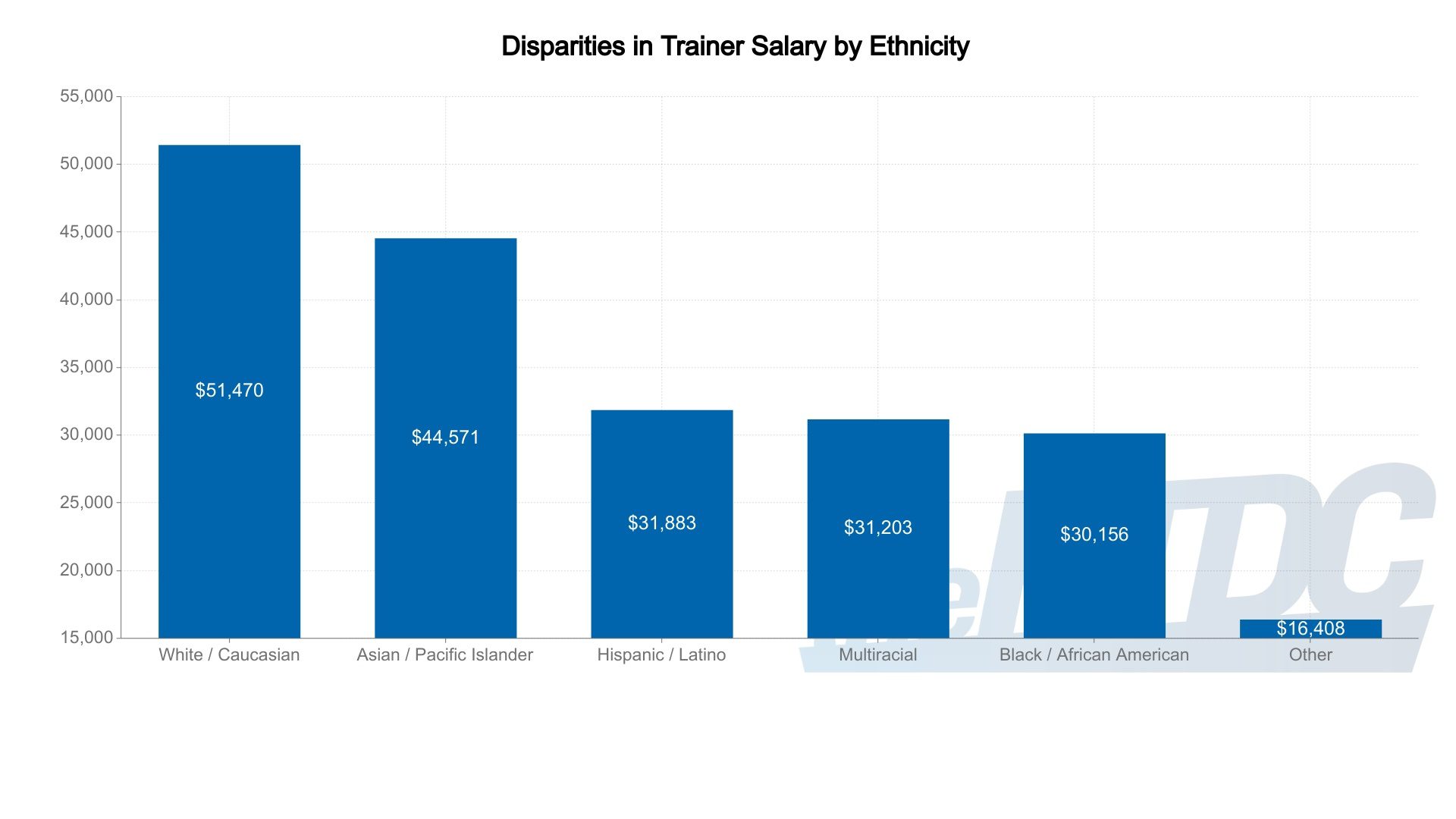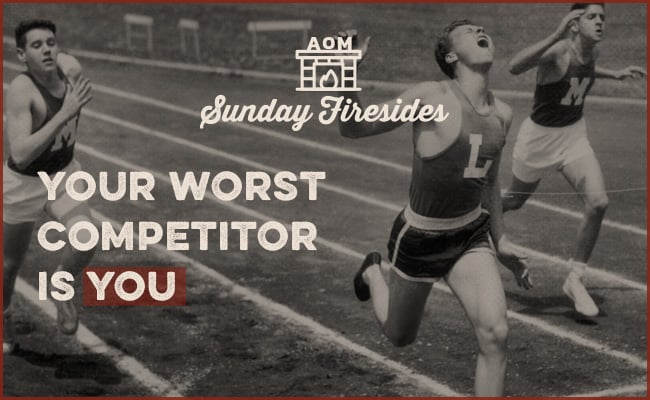“You can do it!” “Keep going!” “You got this, don’t quit!” These were just a few of the exclamations of support from others that I could barely make out as I struggled to finish one of the toughest workouts I had ever done. Everyone else from class (including a very pregnant woman) had finished, and all eyes were on me. It was early on in my days of CrossFit, and I was still figuring it all out. I didn’t yet know that everyone waited around and watched until the last person was done. It was part of the community support that they provided one another when times got tough.
For me, the cheers of others encouraged me as I grind out rep after rep knowing that each one was counted toward my total score. CrossFit, like many other sports, is measured in various numbers to indicate success, such as weight, time, reps, and so forth. These barometers provide a standard of excellence that athletes live or die by. Trust me, it’s that serious to many of them as I would soon find out.
Not long after this day, I realized that many of the athletes I worked out with (myself included) were driven by a special kind of motivation. This was something that came naturally for me as I came from a competitive sports environment. Plus, I coached my business clients around motivation daily. Still, I knew that there were greater forces at play here, so I decided to examine things under a microscope. It was then that I came across a term I was unfamiliar with: achievement motivation.
What Is Achievement Motivation?
Considering that the concept of achievement motivation may be unfamiliar to you as well, here’s a brief definition to help you understand.
Achievement motivation is defined as the need for achievement and is an important determinant of aspiration, effort, and persistence when an individual expects that his performance will be evaluated in relation to some standard of excellence.[1]
In the case of my workout, I was pushing myself to get the best possible score, knowing it would be measured against all other athletes and written on the board for everyone to see.
While the dictionary definition may provide more context, you still may be wondering, what is achievement motivation and how does one use it?
Let’s take a deeper look to help you not only understand it better but maybe even get a leg up in your workouts and other areas of your life.
Atkinson’s Achievement Motivation Theory
The concept of achievement motivation dates back to the forties where various works on success and failure along with ego-involvement provided the early foundation for what would become John W. Atkinson’s Achievement Motivation Theory (AMT) in 1966.
AMT explains the integral relationship between an individual’s characteristics and their need to achieve something in life. It also takes into account the kind of competitive drive a person has to achieve and set goals. For me, this was the drive to put up a good time in the workout. Other examples you may relate to are how you perform at work, school, or even a local bowling league.
In all cases, there are various forces at work. An essential component to note is the presence of internal and external factors, which play a role in motivation. The theory explains that the motivation one has to achieve something in life is closely governed by these factors.
Some examples are:
- Internal: willingness, determination, punctuality, personal drive
- External (also known as environmental factors): pressures, expectations, targets (All of these are set by relevant organizations, members of the family, or society.)
In the case of my CrossFit workout, the parameters of a time and reps measurement were set at the beginning of class. Thinking back to the workout, I can tell you that there were internal and external factors at work.
First, I was both willing and highly determined to finish. This internal drive was extremely motivating for me in the situation given that I had committed to finishing from the start, and I was not going to quit.
Second, all other athletes present had finished, and having everyone waiting on me was an uncomfortable place to be. This provided the added pressure I needed to keep moving.
All in all, both the internal and external factors gave me the “kick in the butt” I needed to finish.
Other Influential Factors
Apart from the factors mentioned above, various other factors also have the potential to influence and interact with your achievement motivation, especially in a setting with others such as CrossFit. Some can be categorized as internal and others external, but they all intertwine and can play a part.
Your values, educational background, cultural background, external support from the organization you are a part of, awards, the celebration of accomplishments, recognizing success, providing constructive feedback, and helping one grow by providing the proper support mechanism are all equally important and play vital roles in achieving the required motivation.
The old saying that “we are a product of our environment” is definitely true when it comes to achievement motivation.
Another thought that comes to mind as I read this list is that I can clearly see why CrossFit is so popular. It provides almost every one of these influential factors in a welcoming environment. This example shows us the power of the external components.
Achievement Motivation Success Depends on You—Or Does It?
At this point, you may be saying to yourself, “Sure, I can agree that the outside world has an effect on me, but I make my own choices. I’m motivated from within.” Yes, this is true. We all make our own choices and are driven by our internal emotions.
We are emotional beings who occasionally think and not the other way around. Here is where you have to take a step back and consider what your typical motivators are in a given situation. Are you typically driven more by intrinsic or extrinsic motivation? Here’s a refresher on those two pieces of the puzzle in case you’re not familiar.
Extrinsic motivation – an external incentive to engage in a specific activity, especially motivation arising from the expectation of punishment or reward.
It sounds like, “I really want that promotion to make more money.” You are driven by the external reward of money.
Intrinsic motivation – an incentive to engage in a specific activity that derives from pleasure in the activity itself rather than because of any external benefits that might be obtained.
It sounds like, “I’m going to work really hard to get that promotion so I can be more fulfilled at work.”
You are driven towards the achievement of a promotion by your persistent hard work.
When you add these into the mix, the picture becomes a bit clearer. Your experience may differ from situation to situation, but you will typically have an affinity towards one over the other.
Success Vs. Failure
Another key aspect is the concept that achievement motivation stems from two separate needs. One is the motivation to achieve and is related to one’s desire to accomplish successful goals, and the other is the motive to avoid failure.[2]
Some individuals are hesitant to take on the responsibilities of having to accomplish goals or employ in activities because they are afraid to fail. The motive to avoid failure includes worries about the consequences of failing, self-criticism, and diversion of attention, accelerated heart rate, or nervousness, which can all lead to poor performance.
In contrast, those who feel the need to achieve successful goals are more motivated to persist at goals they know they can accomplish, which means that your achievement-oriented behavior is influenced by the strength of your tendency to achieve success.
The success vs. failure driver can be seen in competitive environments all across the world from your local CrossFit gym to the Olympic games. Just listen to the post-event interviews, and you will hear the clues that indicate which was the driving force within the athlete. I personally enjoy listening to the accompanying music played in relation to the event, such as “All I Do is Win” by DJ Khaled or “Loser” by Beck. The music always shows how the outside world viewed the athlete or event, which takes us back to the power of the external factors.
These are especially prevalent in areas where performance is evaluated as attention is drawn to the determinative role of extrinsic motivational tendencies on what appear to be achievement-oriented activities. This means that it may be difficult to tell whether the driving force is extrinsic motivation or achievement motivation.
Is It Really Achievement Motivation?
At this point, you may be slightly confused and wondering if achievement motivation really exists or if it’s just other types of motivation in disguise. Trust me, some of these components may muddy the waters a bit, but there is one over-arching principle that will sway your belief in achievement motivation.
According to Achievement Motivation Theory, a person’s need to achieve something and the reason behind his/her overall motivation to achieve a certain goal, more often than not, comes from within and is strongly related to the individual’s need for power and affiliation.[3]
Said another way, yes, you do make your own choices and your desire for control is what drives these choices.
I bet your as happy to hear that as I was. The key to remember is that achievement motivation stems from an emotional place.
In my example above, it was my emotion that drove me. My competitive drive, masculine pride, and desire to not be humiliated all motivated me to achievement no matter how small the achievement was and believe me it was small. I don’t know which memory is stronger in my mind, the difficulty of the workout, or seeing my four rounds being written at the bottom of the white board as the lowest score of the day.
I put the achievement motivation to good use, though. It wasn’t too long before I started beating everyone and finishing on top—well, almost on top. The very pregnant lady keep kicking my butt all the way until the day before she delivered. Guess you can’t win them all, but you can be motivated to try!
Learn More About Motivation
Featured photo credit: Garrhet Sampson via unsplash.com
Reference
| [1] | ^ | Encyclopedia.com: Achievement Motivation |
| [2] | ^ | Encyclopedia of Child Behavior and Development: Achievement Motivation |
| [3] | ^ | Marketing91: Achievement motivation theory |
The post What Is Achievement Motivation And How To Use It appeared first on Lifehack.
// Staying Motivated,Marc Torzar //






















































